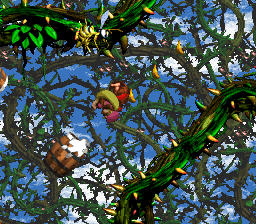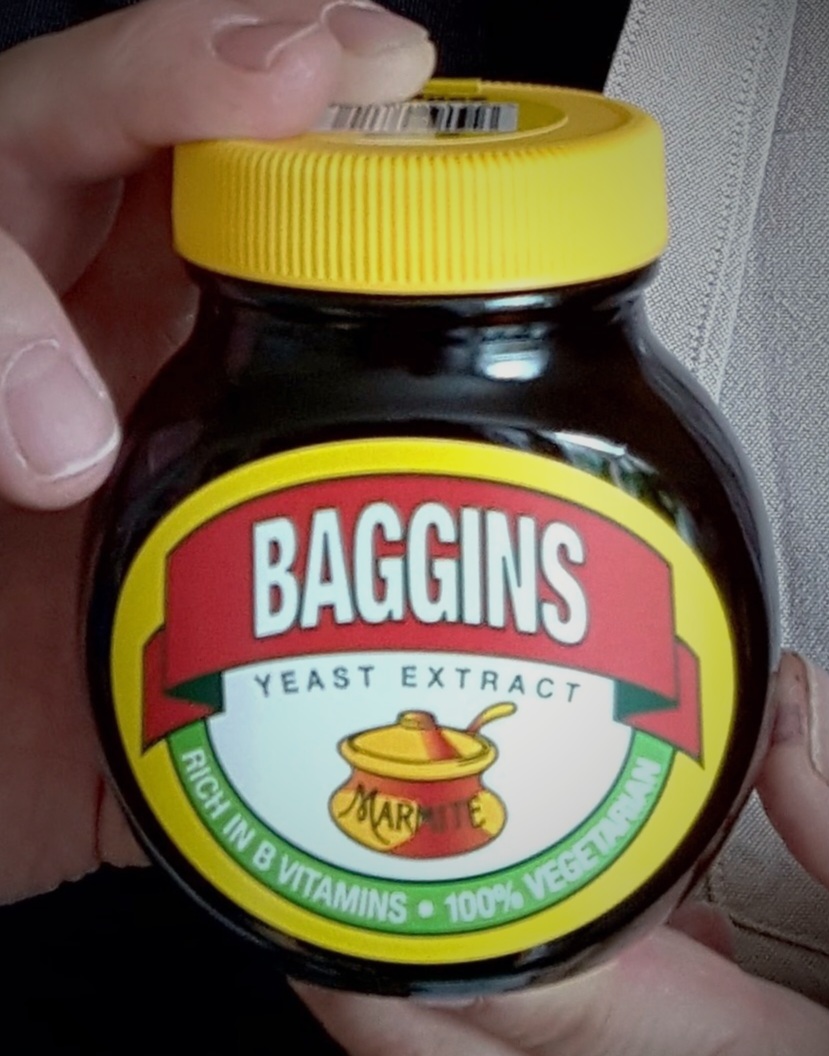Fun fact: the name for a weed in my native language is literally “angry grass” :3
Unkraut in German. Doesn’t deserve to be called a Kraut.
Similar in Norwegian: Ugress. Un-grass.
I’ve heard one definition of it that I like: The grass that your (grazing) animals won’t eat.
Oh man. I have known this word as the name of an electronica music project for many years. Now I know what it means (never bothered to look it up. )
Ogräs in swedish, gräs is herb and the O is like making it not-grass.
Röka gräs is smoking weed though so suddenly it’s getting the good treatment.
Herb is ört in Swedish. Gräs is better translated as grass, so ogräs is non-grass. This also enables a funny way to insult someone’s lawn – since lawn is gräsmatta (grass carpet) – by calling it an ogräsmatta.
So technically all non-Germans are Unkrauts! I‘m incorporating this word.
I know where you are coming from, but as a German calling someone „Unkraut“ has a very dehumanizing sound and was used by nazis to classify people they wanted to murder. Example: https://www.deutsche-digitale-bibliothek.de/item/6SLYFZ3ZSAWYUJX26V4EXWYGFZBI7ZFH
„However, it would have to become the task of the Inner Mission… to clear God’s field of this Unkraut“: women as victims of forced serialisation and “euthanasia” under National Socialism
What happend next is posted daily by https://mastodon.world/@auschwitzmuseum So you might want to skip this.
Um… Ok you might have saved me from a few faux passes.
Happy to help!
deleted by creator
I love it, what language is that?
Lithuanian :3
Very :3pilled
:3 and UwU are my personality at this point x3
My guess was correct, based only on the translation of piktžolė lol.
In Swedish the prefix for bad stuff is the same as the prefix for not or un-. So a monster is a not-animal and a weed is ungrass. Which is especially interesting to me because that same prefix (o) is for better versions of things in Japanese.
e: This got me thinking about “plant,” and I realized it’s literally the verb to plant. In Swedish it’s a growth, or thing that grew. Japanese and Chinese: planted thing. Spanish is also the same as the verb. I feel kinda bad we mostly talk about them in terms of farming them rather than giving them a proper name. Like if they get sentient someday, plant will probably be considered a slur.
that same prefix (o) is for better versions of things in Japanese.
Puts on nerd glasses well ackshually it’s used to elevate the status of something, such as with people, objects or other entities of social or religious significance (for example other people’s family members in a polite situation). It’s more honored than better.
I don’t love the honor translation partially because it’s been used in racist caricature, but also because it’s often inaccurate. Like you might say ohana because you’re in an extremely formal interaction, or because you want to sound poetic or whatever, but you’re not actually saying “honorable flowers” usually. You can mean that though. I feel like it’s too context-sensitive and culturally nuanced for simple translation.
Like you might say ohana because you’re in an extremely formal interaction, or because you want to sound poetic or whatever, but you’re not actually saying “honorable flowers” usually.
I think the most common instance would be simply wanting to sound cute.
The French name for weed could be translated to “bad/wrong grass”
Erbaccia in Italian, bad/ugly grass
I think this is something I might be too French-Canadian to understand, here we’d call it “pot” or perhaps “herbe”, both of which don’t translate to “bad grass”.
Unless overseas “herbe” translates to weed. We use it pretty interchangeably with “gazon” (which just means grass)
“Mauvaises herbes” this is the word I was thinking about.
Mine translates to “bad grass” in both my mother languages.
Seems to be a pattern :3
yeah, that both have a lot of words translated from each other xD
My definition: aggressive spread and resilience to removal.
Plants that are pretty might get more of a ‘pass’ than ones which are ugly, poisonous or thorny, but ultimately, even the most beautiful flower becomes a weed when it’s suddenly everywhere and you are fighting constantly to get rid of it.
aggressive spread and resilience to remove
Many would argue that mint is an herb. But if you ever had your garden invaded by mint, you’ll definitely classify them under weed.
Always plant mint in a pot. And if your neighbour has mint in their garden, you better have a 2m trench filled with concrete between their garden and yours.
60 cm is the actual number, which makes it much too real for me…
I love stumbling across random information like this. I had no idea that mint spread so aggressively - and will likely never need this information. But it’s fun to learn.
Not only does it spread aggressively through its roots, but it also grafts onto almost anything. The roots connect to other plants and create new hybrid mints.
aggressive spread and resilience to removal
Humans are a weed.
becomes a weed when it’s suddenly everywhere and you are fighting constantly to get rid of it
(Humans! :))
But you are fighting constantly to get rid of it bcs of some arbitrary goals. And the fact it’s spreading means that it’s perfectly adapted for survival in that environment you created, so it’s perfect for that pace.
My sounding port is DC 24V compatible, just hook me up, I have still decades of battery life to offer!
the fact it’s spreading means that it’s perfectly adapted for survival in that environment you created, so it’s perfect for that pace.
There is such a thing as exotic invasive species that destabilize the local ecosystem, though.
Yes, humans.
We destabilised to fairly high extend literally all the ecosystems (unless you count battery cage farming as an (artificial) ecosystem, that one boomed, agricultural monocultures too).But I’m not just continuing a bit, humans are rally the source of a lot of invasive species introduced to local environments where otherwise that wouldn’t happen. And it mostly happened unintentionally, but intentionally too.
The dif I wanna point out is the scale & timeframes.
Eg naturally (by which I mean without human involvement) invasive species mostly happen really slowly, and from adjacent ecosystems (sure, there are exceptions, but it’s like spiders shooting butt-strings into the air & just by chance floating to Hawaii). Bcs ecosystems overlap, there is no strict boundary for the species.And that is what always happened throughout history, it’s part of evolution (ever fauna actively transferring various species to new environments).
No weed is for plant. Fir animals its pest/vermin.
True. Which still leads to an infestation.

On non-logarithmic scale:
And don’t forget that shown is just the last couple of thousand of years - there are 4 more millions of years prior to this of slow growth (and some collapses) but it wouldn’t even register on such a chart.
Ugh, I guess this is far off topic.
The average growth rate from 10,000 BCE to 1700 was just 0.04% per year.
Wow that’s crazy to me. I had always envisioned humans steadily spreading and growing constantly. I had no idea that we were basically treading water for so long.
Yeah, 4 million years of various “humanoid” species cohabiting & barely making it through (one big event wiping out the whole species - that’s why we have such a shallow gene pool & all look “identical” relative to difs in other species).
But the rapid growth was always unsustainable, the gens lived on natural wealth that they just took out of (into?) the economy way quicker than the replenishing cycle. But the difference between a million and a billon is unimaginable, that’s why we can now witness the collapse (mass extinction event) within a generation.
Love the malthusianism. Why focus on person or life quality when you can terminate your thoughts with ‘human bad’?
No need to ever fix or grow if just ‘human bad’.
My definition: aggressive spread and resilience to removal.
That fits to a lot of useful plants too. Strawberries, Brambles, Mint, just to name a few.
Yes. If you don’t have adequate containment then strawberries can absolutely be a weed.
A delicious weed, but still a weed.
And that’s the actual definition of a weed: If you don’t want it there, it’s a weed. If you do, it’s not.
Just wait until he finds out about “tree”
Any kind of twig that’s not a shrub?
A nice one, and not too expensive.
Ni
Oh, what sad times are these when passing ruffians can say, “Ni” at will to old ladies!
Nuu, nuu!
Clean and reasonably priced
Or “fish”
Or “fruit”
Or ‘vegetable’
In Spanish we call them “malas hierbas”
In German it’s “Unkraut” which could either be interpreted as “not herb”, “abnormal herb” or “evil herb”. Is the range similar in Spanish?
Other than the “not” part, yeah. “Mala” is bad, wrong, evil, wicked, ill, naughty, etc.
(Checked this to confirm before I posted, since it’s been several years since I’ve known Spanish well enough to speak it.)
Estonian is umbrohi which is kind of like “not grass” so pretty similar to Deutsch here
In french, it’s similar: “mauvaises herbes”
And I think that’s beautiful.
deleted by creator
I learnt from Animal Crossing that it was “Malezas”
https://es.wikipedia.org/wiki/Maleza
La maleza, mala hierba, hierba mala, yuyo, planta arvense, adventicia o planta adventicia, planta espontánea o planta indeseable
“Mala hierba nunca muere” is also a fun saying
Maleza is more like a thicket or lots of malas hierbas.
https://dle.rae.es/maleza?m=form
But now I see that in some countries is synonymous with mala hierba, I didn’t know that.
Some countries in Latin America call it maleza and others do not
My garden is all weeds. Tons of different plants, but some dominate in certain seasons, growing like 5 feet high. Seems to have avoided anything nasty though, no thistles, nettles or brambles.
My neighbour’s garden is a thin layer of plastic astroturf. And they let a dog run about on it. Good luck getting dog diarrhoea out of that.
I know which I prefer.
If you are happy with the plants being where they are then they aren’t weeds. The main problem is companies that sell plant killing chemicals and services treat the word ‘weed’ as if it had a universal meaning.
I wish someone had warned me before No Mow May about brambles.
1 shoulder injury and a year later I need chainmail gloves and a fucking flamethrower. I fill my green bin with brambles, by the time it’s picked up they’ve grown back.
The main root is under a shed. I don’t know how to eliminate it.
The worst I had to deal with was pampas grass, which appears to be a plant made of actual swords.
I spent three days hacking at it in a coat so I wouldn’t get shredded. When I finally cut the root bulb out it was a cube of wood a foot across. I could barely lift it out, I had to roll it to the bin.
At least pampas grass doesn’t spread.
Pampas grass is actually super invasive in certain areas (like all of California).
I don’t know if this will work on brambles, but for pesky root systems I’ve had luck with Bonide’s Stump and Vine killer. You cut near the base of one of them, then paint the exposed stem with this stuff. It absorbs into the root system and kills all of it. Works great on pokeweed.
Edit: Turns out this is just a specific brand of triclopyr herbicide like MoonMelon mentioned. So here’s another recommendation for triclopyr!
Cheaper than buying my third set of secateurs, I’ll give it a go, thanks!
I don’t know if you’re opposed to herbicide, but triclopyr will kill it. You can get triclopyr salt (water based) and apply it to the freshly cut stump surface (within moments of cutting), or triclopyr ester (oil based) and apply it to the outside of the plant close to the base, no cutting required. Both of these will kill the root. Otherwise just keep cutting and eventually you will exhaust the root.
Not sure about elsewhere, but in the USA you can typically buy the water-based triclopyr salt in a small bottle with a brush attached to the cap. This is in pretty much any garden store. Even though you have to cut the plant first I think this is the best form for just a few plants.
If I can use it in a targeted way with limited collateral I will take it.
It between a shed and neighbours fence so as long as I don’t end up nuking their garden there’s not much else to affect.
Thanks
Brambles can be valuable plants, providing shelter and food for many small animals and tasty blackberries for people. But, if they become noxious, they can spread quickly and choke out all other plants. They spread by rooting from the plant tips and even if you dig up the root system, any little piece of root can and will re-root and grow a new plant.
Either move the shed to get at it - all of it - or you honestly may need to resort to herbicide to kill it. It sounds like you have fought them mechanically and are losing the war. I would recommend consulting your local garden center for the best herbicide to apply to kill them.
Yeah, it’s a shame to get rid of it, I’m usually happy to let it go crazy for a few months so the bees and birds have their way. But I learned about bramble growth the hard way. Didn’t know they were vibes or they spread from the tips. Thought I could just chip the main stem and it wouldn’t be a big deal. But it’s had 2 summers now and when I cut the grass (or tried to) surprise!
The floor is bramble vines too. Like something out of a horror film, just kept pulling them up, ruined 2 pairs of gloves and 2 sets of secateurs , it’s only a tiny garden! (And the first sets were never up to the task)
Luckily I have some other bushes and ferns for stuff to live in but I just don’t have time to stay on top of the mechanical side to control it.
brambles
Don’t know what plant it is, but what a great word.
Nature’s barbed wire. They often have things like blackberries on them.
I have a thornless variety of blackberry along my fence. I would still consider that area full of brambles though.
Thank you for enlighting me. :)
This is a screenshot from a stage in Donkey Kong Country 2 called Bramble Blast. It’s those plants.

I also prefer your dumb neighbor having diarrhea stained astroturf.
I have brambles sprouting up all over the place from where they were left to spread by the previous occupant. And that sodding bindweed stuff.
If it wasn’t for my wife it’d be full of veg.
The general definition of a weed is “any plant growing where you don’t want it to be”. A corn plant in a bean field is a terrible weed.
what the hell is a bean field? also beans are great with corn they climb the stalks, also have squash, then boom you have the so called three sisters.
Bush beans are a thing? Soybeans don’t climb either, and it’s the most common bean grown in the US.
oh I’ve only grown vine beans. The ones I have that were originally smuggled when all the invasive species were brought in grow easily 10+ feet high and any I can’t reach are left to dry on the vine at the end of the season and the poles are toppled to grab them
I suspect that’s one of the reasons they’re grown in greenhouses commercially. They use a lift to pick, and it’s easier to drive over pavement than dirt.
I am aware of, and deeply intrigued by, the three sisters method. It’s just not a commercially viable method of growing those crops; I don’t know what the harvest would look like.
We need to grow a lot more industrial hemp, but I’m afraid that’s a bit of a pipe dream unless we change…literally everything.
We have neighbors with tons of hemp bales mouldering in the field because the processors won’t take them because they don’t have anywhere to sell them to. Maybe it’s incompetence, or maybe the hemp hype isn’t all it’s cracked up to be. There aren’t a lot of people willing to grow it anymore.
Never heard of the battle of the beanfield?
Yes, this was a real educational technicality fuckup, it seemed sus but everyone was like “don’t you know it’s a weed”? - “No, no I do not. And you don’t even have a field to worry abut crop yields, it’s just a lawn & now there is a flower in it, wtf.”
I know it’s economy (or even sociology), but it’s too close to biology not to directly explain it properly.
I’ll have you know my lawn is a crop and it yields social status.
I prefer the bees in my clover over conforming to some neighborhood standards.
Social status with the local HOA,
not the social status with the local coven.
Well, “weed” can be a legal definition. A lot of governments have a noxious weed list that either provides for consequences if you suffer that plant on your property, or just an excuse for the government to come on to your property to kill the weeds for you. For instance, Russian Olive is legally a “kill on sight” invasive plant in my area.
noxious and invasive weeds.
weeds are plants with the capacity for spite
Weeds is just the gardening term for “their kind”.
“you people”
The idea of “weeds” is a colonialist construct.
A weed is whatever your HOA says it is.
A HOA is a weed.
[with visibly bloodshot eyes] “Nah, man, I disagree with your definition there.”
like I know it’s a science meme but both the stoner and the linguistics guy inside me go “but wait, there’s more…”
Don’t smoke dandelions.
But do make wine from them…
deleted by creator
i call this the weed paradox.
even though weeds grow unassisted. it is impossible for everyone to grow weeds in their garden. for is they try, they are no longer weeds
Is this fish but with plants?
fish but with plants is trees
get out… are you saying barks have no meaning
barks have the meaning that you agreed upon with your puppy girlfriend :D






















